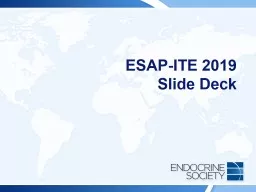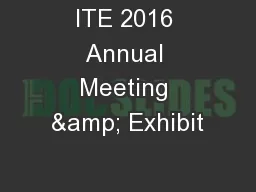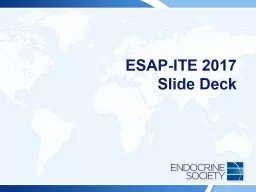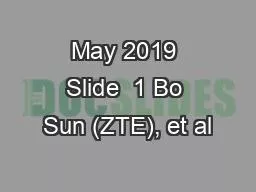PPT-ESAP-ITE 2019 Slide Deck
Author : myesha-ticknor | Published Date : 2019-11-25
ESAPITE 2019 Slide Deck ADRENAL ITE 2019 Question 3 A 54yearold man has had difficulttocontrol hypertension for 3 years He has gained 33 lb 15 kg in the last 3 years
Presentation Embed Code
Download Presentation
Download Presentation The PPT/PDF document "ESAP-ITE 2019 Slide Deck" is the property of its rightful owner. Permission is granted to download and print the materials on this website for personal, non-commercial use only, and to display it on your personal computer provided you do not modify the materials and that you retain all copyright notices contained in the materials. By downloading content from our website, you accept the terms of this agreement.
ESAP-ITE 2019 Slide Deck: Transcript
Download Rules Of Document
"ESAP-ITE 2019 Slide Deck"The content belongs to its owner. You may download and print it for personal use, without modification, and keep all copyright notices. By downloading, you agree to these terms.
Related Documents














